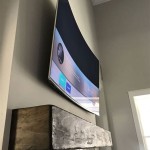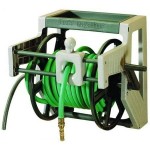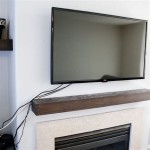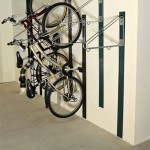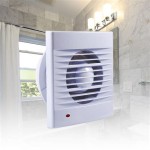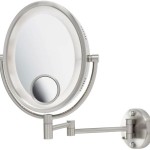Wall Mounted Welding Fume Extractor: An Essential Component for Workplace Safety
Welding, a critical process across numerous industries, inherently generates hazardous fumes and particulate matter. These contaminants pose significant health risks to welders and other personnel in the vicinity if not properly managed. Wall-mounted welding fume extractors represent a practical and effective solution for mitigating these risks, contributing to a safer and healthier work environment. This article will examine the functionality, benefits, selection criteria, and maintenance aspects of wall-mounted welding fume extractors.
A wall-mounted welding fume extractor is an air purification system designed to capture and filter fumes generated during welding processes. These systems are typically mounted on a wall or other vertical structure near the welding area, allowing for easy access and positioning. The fundamental principle of operation involves capturing fumes at the source or close to the source, preventing them from dispersing into the general workspace. The captured fumes are then drawn through a filtration system, removing particulate matter and harmful gases before the cleaned air is recirculated back into the environment or exhausted externally.
The design of a wall-mounted fume extractor commonly includes a flexible extraction arm, a powerful fan or blower, and a multi-stage filtration system. The extraction arm, often equipped with a capture hood, can be easily adjusted and positioned to effectively capture fumes directly at the welding point. The high-velocity airflow generated by the fan draws the fumes into the filtration unit, where they are processed through various filter layers to remove contaminants. The filtered air is then discharged back into the workspace or vented outside, depending on the system's configuration and the specific regulations in place.
Key Point 1: Health and Safety Benefits of Wall-Mounted Welding Fume Extractors
The primary benefit of wall-mounted welding fume extractors is the significant improvement in air quality and the reduction of health risks associated with welding fumes. Welding fumes contain a variety of hazardous substances, including metal oxides, fluorides, and other chemical compounds. Inhalation of these substances can lead to a range of health problems, both short-term and long-term. Short-term effects may include respiratory irritation, nausea, and headaches. Chronic exposure to welding fumes can result in more severe conditions such as lung cancer, metal fume fever, and neurological damage.
By effectively capturing and filtering welding fumes, these extractors drastically reduce the concentration of airborne contaminants in the welder's breathing zone and the surrounding workspace. This reduction directly translates into a decreased risk of respiratory illnesses and other health problems associated with fume inhalation. Furthermore, a cleaner work environment fosters increased productivity and morale among employees. Workers are more likely to be comfortable and focused in a space free from excessive fumes and odors.
The implementation of wall-mounted fume extractors also aids in compliance with occupational safety and health regulations. Regulatory bodies such as OSHA (Occupational Safety and Health Administration) in the United States set permissible exposure limits (PELs) for various substances found in welding fumes. Using fume extractors helps employers maintain air quality within these mandated levels, avoiding potential fines and legal repercussions. Beyond regulatory compliance, demonstrating a commitment to worker safety through the use of fume extraction systems enhances a company's reputation and fosters a positive safety culture.
Beyond worker health, the reduction of airborne particulate matter contributes to a cleaner and more efficient work environment. Welding fumes can settle on equipment and surfaces, leading to corrosion and accelerated wear. This can result in increased maintenance costs and downtime. By minimizing the deposition of contaminants, fume extractors help prolong the lifespan of equipment and reduce the need for frequent cleaning.
Key Point 2: Factors to Consider When Selecting a Wall-Mounted Welding Fume Extractor
Choosing the right wall-mounted welding fume extractor requires careful consideration of several factors to ensure optimal performance and suitability for the specific welding application. These factors include the type and volume of welding being performed, the size and layout of the workspace, the types of materials being welded, and the specific contaminants present in the welding fumes. It is also essential to comply with relevant safety regulations and industry standards.
The airflow capacity of the extractor is a critical parameter. It is typically measured in cubic feet per minute (CFM) or cubic meters per hour (m³/h). The required airflow depends on the size of the welding area and the volume of fumes generated. Generally, larger welding areas and more intense welding processes require higher airflow rates. Insufficient airflow can result in incomplete fume capture, diminishing the effectiveness of the system. Overly high airflow, however, can create drafts and be unnecessarily energy-intensive.
The filtration system is another essential component that requires careful evaluation. Wall-mounted fume extractors typically employ a multi-stage filtration process to remove various contaminants. Common filter types include pre-filters, which capture larger particles; main filters, which remove fine particulate matter; and activated carbon filters, which adsorb gases and odors. The selection of filter types should be based on the specific contaminants present in the welding fumes. For example, welding stainless steel may require filters designed to capture hexavalent chromium, a highly toxic substance.
The extraction arm's design and reach are also significant considerations. The arm should be flexible and easily adjustable to allow the operator to position the capture hood close to the welding point. The reach of the arm should be sufficient to cover the entire welding area without requiring frequent repositioning of the extractor unit. Some extractors are equipped with telescopic or extendable arms to provide greater flexibility. The material of the extraction arm should also be durable and resistant to heat and chemicals.
The ease of maintenance is a practical consideration. Filters need to be replaced or cleaned regularly to maintain optimal performance. The extractor should be designed for easy access to the filters, and the replacement process should be straightforward. Some extractors are equipped with filter monitoring systems that alert the operator when filter replacement is needed.
Finally, the noise level of the extractor should be considered, particularly in environments where noise pollution is a concern. Some extractors are designed with noise reduction features, such as insulated housings and silencers, to minimize noise levels.
Key Point 3: Maintenance and Operational Considerations
Regular maintenance is crucial for ensuring the effective operation and longevity of a wall-mounted welding fume extractor. A well-maintained system will provide consistent performance, prolong filter life, and minimize downtime. Maintenance procedures typically involve regular filter checks and replacements, cleaning of the extraction arm and capture hood, and inspection of the fan and motor.
Filter replacement frequencies depend on the type and volume of welding being performed, as well as the capacity and efficiency of the filters. Pre-filters typically require more frequent replacement than main filters, as they capture larger particles and prevent them from clogging the main filter. Activated carbon filters may need to be replaced periodically to maintain their adsorption capacity. The manufacturer's recommendations should be followed regarding filter replacement intervals.
The extraction arm and capture hood should be cleaned regularly to remove accumulated dust and debris. This can be done using a brush, vacuum cleaner, or compressed air. The arm's joints and connections should be inspected periodically to ensure that they are tight and secure. Any leaks or damage to the arm should be repaired promptly to prevent loss of suction.
The fan and motor should be inspected regularly for signs of wear or damage. The motor should be lubricated according to the manufacturer's instructions. The fan blades should be cleaned to remove any accumulated dust or debris, which can reduce airflow. The electrical connections should be checked to ensure that they are secure and free from corrosion.
Proper operational practices are also essential for maximizing the effectiveness of the fume extractor. The capture hood should be positioned as close as possible to the welding point to capture fumes at the source. The airflow should be adjusted to provide adequate suction without creating excessive drafts. The extractor should be turned on before welding begins and left running for a period of time after welding has ceased to ensure that all fumes have been captured.
Additionally, operators should be trained on the proper use and maintenance of the fume extractor. This training should include instructions on how to position the capture hood, adjust the airflow, replace filters, and perform routine maintenance tasks. Regular training updates should be provided to reinforce proper procedures and address any questions or concerns.
In conclusion, wall-mounted welding fume extractors are indispensable tools for maintaining a safe and healthy welding environment. By understanding their functionality, benefits, selection criteria, and maintenance requirements, businesses can make informed decisions to protect their employees, comply with regulations, and optimize operational efficiency.

Wall Mounted Fume Extractors Xtractors

Wall Mounted Fume Extractors Ducted Xtractors

Mw1901 Wall Mounted Welding Fume Extractor Masterweld

Fume Dog Wall Mounted Hepa Weld Extractor Installation Quick Overview Youtube

Wall Mounted Welding Fume Extractors Dog

Sas 300 Series Wall Mounted Fume Extractor Ss Sky

Ce Certified Wall Mounted Welding Fume Extractor For

Sip 05812 Fx Wm Wall Mounted Welding Fume Extractor

Telescopic Welding Fume Extractor Extendable Extraction

Plymovent Monogo Wall Mounted Welding Fume Extractor

